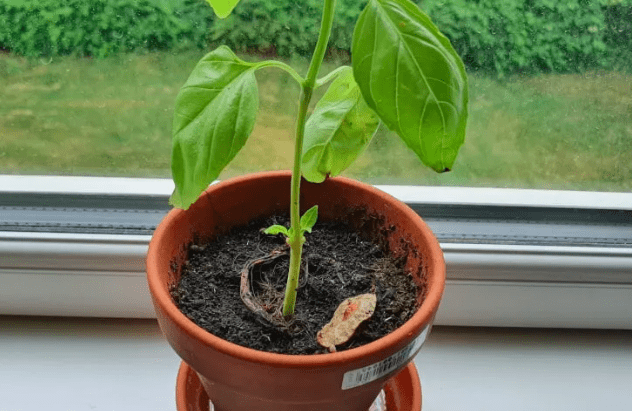Basil plants are a popular herb used in cooking. Not only do they taste delicious, but they are easy to grow. However, they need to be protected from the cold weather if you live in a climate where it gets below freezing. In this blog post, we will discuss how to protect your basil plants from the cold so that they can continue to thrive all winter long!
Can Basil Survive Winter?
Yes, basil can survive winter, but only if you take the proper precautions. If the temperature in your area drops below freezing, you will need to take your basil plants indoors. This is because basil is a tropical plant and cannot tolerate cold weather.
However, most species of basil are annuals, which means they only live for one growing season. This means that many people simply choose to start fresh with new basil plants each spring, rather than trying to overwinter their plants.
How to Protect Basil Plants in Winter?
If you want to try and overwinter your basil plants, there are a few things you can do to help them survive the cold weather.
Large pot
First, make sure you plant them in a pot that is big enough. This will give the roots plenty of room to grow and will help insulate the plant from the cold.
Water & fertilizer
Next, you will need to water your basil plants regularly. This is especially important if the weather is dry, as basil plants are susceptible to drought. Be sure to also fertilize your plants every few weeks to keep them healthy.
Mulch
Mulching is a well-known gardening technique that can be used to protect plants from the cold. You can use any type of mulch, such as straw, leaves, or even fabric. Simply cover the pot with a few inches of mulch, and this will help insulate the basil plant and keep it warm.
Doing this in later summer/autumn will give the plant a few more months of growth before it needs to be brought indoors for the winter.
Protection
Finally, you will need to provide some protection from the cold for your plants. This can be done by placing them in a sunny spot inside, rather than out in the cold. You may also want to consider covering your plants with a cloth or tarp if the temperatures are expected to dip below freezing.
Artificial lights
Artificial lights are particularly useful for providing extra light during the winter months. Here in the UK, there isn’t much natural sunlight during winter, so using a grow light is essential for keeping my indoor plants alive! 12 hours of light per day is ideal for most plants, so I set my timer to turn the lights on in the morning and off at night.

How to Treat Cold Damage on Basil?
Cold damage on basil plants looks like brown or black spots on the leaves. If you notice this happening to your plants, it is important to take action immediately.
1) The first step is to move your plants indoors if they are not already. If the temperature outside is below freezing, your plants will not be able to recover from the cold damage.
2) Once you have moved your plants indoors, you will need to cut off any affected leaves. This will help prevent the spread of the damage and allow your plant to focus its energy on healing.
3) After you have removed the damaged leaves, you will need to water your plant deeply. Be sure to also fertilize it so that it has the nutrients it needs to recover.
4) Finally, you will need to provide some protection from the cold for your plant. This can be done by placing it in a sunny spot near a window or by using a grow light. Preventing further cold damage will help your plant recover more quickly.
How Cold Can Basil Tolerate?
Basil is a sensitive herb, and even a slight drop in temperature can affect its growth. In general, basil plants can tolerate temperatures as low as 50°F. However, they will not thrive in this temperature range and may start to show signs of stress, such as wilting leaves.
When temperatures drop even more, below 0°F, basil plants will start to experience cold damage. This can manifest as brown or black spots on the leaves and may eventually lead to the death of the plant.
Conclusion
In conclusion, it is important to take measures to protect your basil plants in winter. This can be done by moving them indoors, mulching them, or providing artificial lights and extra warmth. If you notice any cold damage on your plants, be sure to take action immediately by moving them indoors and removing any affected leaves.
Don’t worry too much if your basil doesn’t look manage to survive the winter as you likely own an annual variety that is only meant to last one season. You can always replant in the spring!
Perennial basil varieties do exist, however, so if you’re interested in growing basil that will come back year after year, make sure to get your hands on one of these plants.
By following these tips, you can help your basil plants survive the winter and enjoy fresh herbs all year round. Do you have any other tips for overwintering basil plants? Share them in the comments below!
Tim is an avid gardener from the UK. He was the founder of PlantCarer.com from 2021 to Sep 2023. He sold PlantCarer.com to Aaron. He has since started his own business called Seed To Supper, which provides new gardeners all the materials you need in a box (pots, seeds, compost and instructions) to grow your own delicious and nutritious vegetables and herbs from start to finish – no garden required.









0 Comments